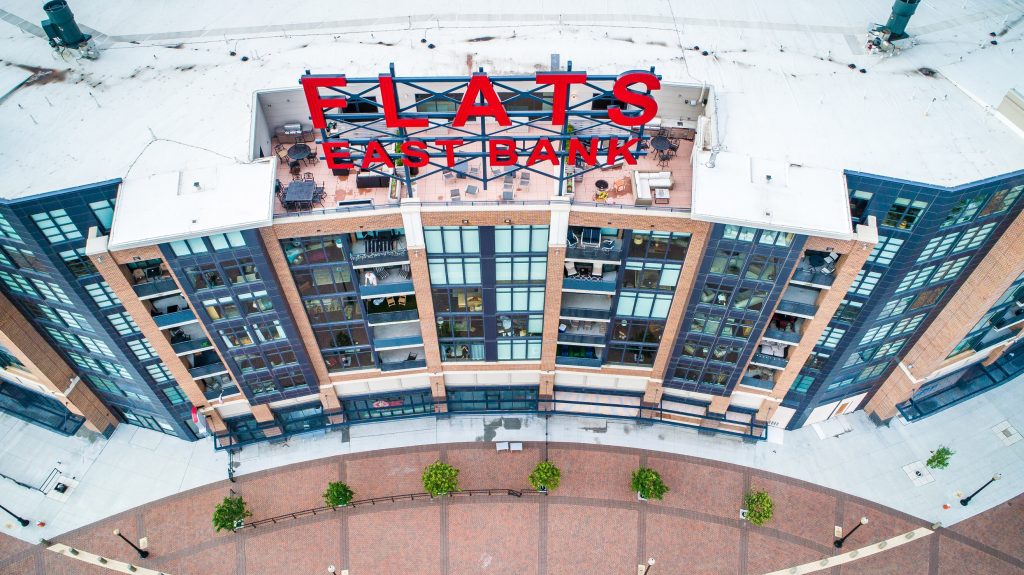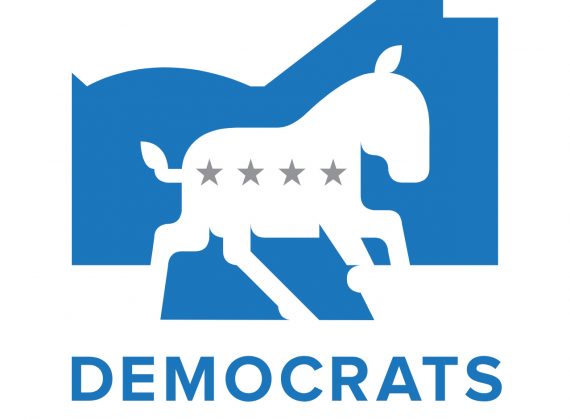
Every decade or so conservative politicians and corporate interests, often the same thing, suddenly discover a new, or newly recycled, way to make money whilst claiming it’s in the best interests of the public. Weaponizing keywords like “market,” “lower taxes,” and “job creation,” they prey on the forlorn hopes of the many living in our country’s urban areas. This is why we’ve seen the emergence of TIF (tax increment financing) projects especially in the political realm.
In fairness, TIFs are not altogether black or white propositions. Their implementation is often complex, and even harder to explain in layman’s terms. However it’s possible they can be employed successfully and ethically, but only under the following conditions: 1.) the development wouldn’t take place “but for” the TIF and 2.) developers’ plans are part of a larger vision for refurbishing the area around the development, and not solely a corporate attempt to line their own pockets. And therein lies the rub, as this is infrequently the way they’ve worked in practice.
Condition #1 above is exactly why the Wolstein development in the East Bank of the Flats, one of the most desirable places to build in the entirety of Cuyahoga County, is so egregious. One can hardly claim the site wouldn’t be further developed, ‘but for,” the issuance of a TIF. TIFs, almost by their nature, create winners and losers, and in Cleveland they’ve led to a windfall for landowners; especially those owning and developing prime real estate. The Wolsteins among them. (For more background on this case specifically see Sam Allard’s piece in Scene, where he captures the moral indignation of many).

How Do TIFs Work?
Tax increment financing has been around since the 1950s when it emerged in California. Today, they’re put to use in nearly every state. Yet, over the last decade they have become something of a lightning rod. In Chicago, where TIF was employed frequently under former Mayor Richard Daley Jr, significant blowback to their usage, especially in well-to-do neighborhoods played a considerable role in Lori Lightfoot’s 2019 mayoral victory there as she harnessed the wave of anti-TIF sentiment. And California itself has passed legislation placing limits on the usages of TIFs to ensure they’re utilized in areas where a need actually exists. Individual states have some differing guidelines for implementing a TIF, but here’s how they work in Cleveland and Cuyahoga County.
- TIF districts are created by the individual city
- Often situated in “blighted” areas
- The public improvements to be made with future TIF funds are established by a government entity
- Base property value is assessed and compiled
- The tax revenue can be used to fund public infrastructure, compensate private developers for their investments, or provide collateral for bonds
- TIFs are used to offset the literal costs of building the development. For example, if a project costs $500 million, but its expected value when completed is only $300 mil., the TIF is being used to supply the extra $200 million. If, and when, the value of said development reaches that $500 mil. threshold, the developer would start paying the taxes at that time
- In Cleveland, TIFs are voted on by City Council and the Cleveland Municipal School District, but the final, actionable decision rests with Cleveland City Council
- There are vagaries involved in this relationship involving CMSD not voting and what that means for the length and exemption amount of the TIF Cleveland City Council can offer
- Property tax amounts collected by jurisdictions won’t go up during the applicable TIF period, they’re frozen; but will after the 30 (or 60!) year period ends without adjustments for inflation
- Extra revenue collected in property taxes is set aside for the previously designated projects
- All growth in tax revenue during the TIF period–which is where the term tax increment comes from since it’s the incremental growth in tax revenue–is set aside and used to finance these projects
- Homeowner and resident taxes aren’t directly affected
- Developers use annual payments from TIFs to pay the debt service on the mortgage of the project
Drawbacks
- Inflation
- Freezing property taxes or values for 30 years will have that money being worth less by the end of the TIF period
- Oversight/Transparency
- TIF revenues almost inherently have less oversight
- In Cleveland, as is too often the case, transparency took a backseat again in the Flats East Bank case this past December; the public didn’t know who the developer even was in this case until Councilmember Brian Kazy pressed the city’s Economic Development Director to somewhat sheepishly admit it’s “a collection of various LLCs that ultimately go back to the Wolstein Group”
- Surely by sheer coincidence, developers make maximum contributions to councilmembers who have TIF zones in their wards. Surprise!
- TIF revenues almost inherently have less oversight

- “But for” language
- A central component of TIF projects is the notion that the development and subsequent improvement wouldn’t have happened “but for” the TIF
- It’s essentially counterfactual since there’s no way to know if the land would’ve been developed without a TIF
- But, this is why TIFs in an area like the Flats are an abomination since we do know that’s prime real estate
- Economic impact
- Do TIFs actually generate new growth?
- According to Bloomberg, after studying TIFs in Chicago and St. Louis, they have only spread development, not fostered real growth
- Molly Metzger, a professor at the Brown School of Social Development at Washington University in St. Louis: “If we continue to incentivize everything, it’s not benefitting the whole city, and it’s not building the tax base.”
- Do TIFs actually generate new growth?
- Gentrification
- In some cities this is one of the unintended consequences, or the TIFs are used in already economically secure or high-growth neighborhoods (i.e. Ohio City. The Flats)
- Yes, along with increased property taxes, home values also increase in gentrified neighborhoods, but many homeowners neither want to sell their homes nor move, nor should they be forced into that situation
- A potential solution herein would be to limit property tax growth for long-term residents, even beyond Cuyahoga County’s paltry Homestead Exemption (more on this below)
- In some cities this is one of the unintended consequences, or the TIFs are used in already economically secure or high-growth neighborhoods (i.e. Ohio City. The Flats)
In Cuyahoga County, 63% of property taxes go to schools. Therefore, the frozen tax rates associated with TIF projects reduce the amount going to our schools. And in a city that has declined in nearly every quantifiable category, it contravenes logic for any reduction in funds to education, as all metrics for a strong regional economy tells us that a well-educated citizenry is absolutely essential.
Beyond the potential negative impact to our schools, the other 37% of our county’s property taxes go to entities like libraries (something our city and county do better than any other) and health and human services. So, while the loss of funding for schools rightfully receives the lion’s share of publicity in the debate over TIF projects, they aren’t the only ones harmed by TIFs in Cuyahoga County. And because of what schools, libraries, and health and human services provide, it’s human beings who suffer.
TIFS don’t necessarily need to be a zero-sum game, but this has become a de facto reality. And the fact remains that he only guaranteed actor in a TIF production to benefit, isn’t the city or the chosen neighborhood’s residents, but private developers and businesses whose initial, up-front costs and property taxes are reduced. Until we can guarantee the citizens residing in and alongside TIF districts are the ones to benefit, and the city of Cleveland publishes fully and clearly the amount of property taxes going to TIF districts, they are NOT working as intended.
TIFs by and large, and the one in the Flats in particular, are yet another example of corporate interests holding the city hostage. Like Stark Enterprises has done when dangling the promise of the NUCleus project, one they keep downsizing, as they built a high rise, exclusive downtown apartment building–the Beacon–while at the same time asking the city and county for millions more for a project they’ve demonstrated little interest in commencing. At least not without our money. For example, Stark Enterprises would get a TIF PLUS 100% property tax abatements for 15 years while at the same time asking for tens of millions in direct aid from Cleveland and Cuyahoga County. It’s hard to think of a homeowner, or small businessperson, who wouldn’t love to make improvements on this type of playing field.
As David Merriman writes in the Lincoln Institute report Improving Tax Increment Financing (TIF) for Economic Development, the public captures no more of the value created by public investments in a TIF district than it would without the TIF district. In fact, he says, “if some TIF revenues are used to subsidize private activity, as is the usual case, TIF is more properly a device that ‘transfers’ value to, rather than ‘captures’ value from, the private sector.”
SOLUTIONS
- Target TIF $ to TOD (Transit-oriented development) & affordable housing projects
- Transit TIF has been used to fund projects in Chicago, San Francisco, and Denver as part of a broader menu of “value capture” strategies that help cities fund large-scale infrastructure improvements
- Portland, Oregon, dedicates about 40% of its TIF revenues to affordable housing. Over nine years, the program generated nearly a quarter of a billion dollars for affordable housing, according to City Observatory. The city’s largest TIF district has generated $83 million and helped produce 2,200 units of affordable housing in combination with other funding sources.
- Some sort of public, citizen-led agency should be considered
- For example, public banks
- Positives
- Reduce high fees and predatory nature of payday lenders
- Bank of North Dakota, started roughly a century ago, today has assets of $7 billion
- Which could be beneficial to economic development won the road but…
- Will not happen overnight, but something must be alternatives to the status quo must be examined
- Negatives
- Obtaining start-up capital will be difficult
- Potential for cronyism or mismanagement of some nature as the current cabal of city leaders can’t even manage legislative transparency
- Positives
- Property tax relief for long-time homeowners
- Something akin to the LOOP (Longtime Owner Occupants Program) program utilized in Philadelphia to cap the amount of real estate taxes for those who meet certain criteria involving length of time in the home (10 years) along with relatively liberal income limits, etc. (Presumably Cuyahoga County and Cleveland would need approval from the Ohio legislature to ok this. Which shouldn’t be difficult, except for the fact that the Republicans writing our laws in Ohio’s statehouse, don’t give a shit about urban areas or their inhabitants)
- The burden of proof in TIF developments, and how they’ll concretely redound to the benefit of our neighborhoods, should fall upon the developers, not elected officials, or residents
- Food for thought: Cleveland has no ordinance regarding corporate tax abatements
- For example, public banks
In Cleveland, welfare for the wealthy, like TIFs and Empowerment Zones, should be, at a minimum, employed in neighborhoods, not business or entertainment districts, and must be spread throughout the city more equitably. Additionally, concrete plans for the betterment of actual residents must be concretely defined by developers moving forward.
To achieve any of this, it seems like a completely new mindset is needed. One that fundamentally places residents and their needs above the whims of wealthy corporatists.




